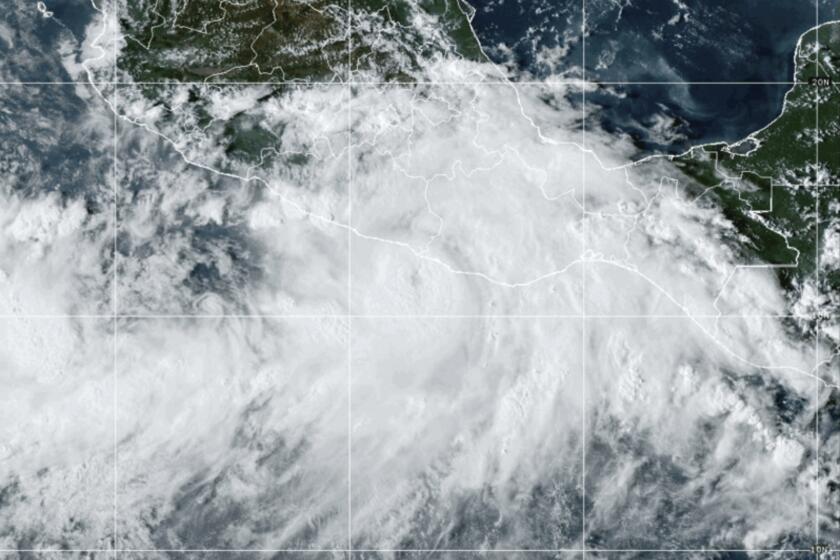U.S. plans to tighten tap for farmers
In a blow to the state’s producers of almonds and other crops, federal officials announced Friday that they may not be able to provide water for the upcoming growing season in parts of the Central Valley.
To cope with the continuing drought, the U.S. Bureau of Reclamation will not provide water for agriculture beginning in March to at least 200 local water districts in that region, agency spokeswoman Lynnette Wirth said. Municipalities and industrial customers will receive half of their allotments.
“This year is on the heels of two previous critically dry years, and this is the third year in a row,” Wirth said, adding that the last time the bureau faced such a shortfall was in 1992.
Also on Friday, the California Department of Water Resources projected that it would be able to allocate only 15% of what its contractors -- including the Metropolitan Water District of Southern California -- have sought.
Matt Notley, a spokesman for the Department of Water Resources, said most of its supply is used by cities and towns but there would be enough water to meet health and safety needs.
Still, Notley said, cities “should already have a plan in place” that may include mandatory rationing to deal with the shortage, and that Californians may be asked to reduce their water use by as much as 20%.
In parts of the Central Valley, farmers are preparing for tough times.
“We’re hoping we can squeak by,” said Chuck Dees, an irrigation specialist and farmer at S&S; Ranch, a 14,000-acre spread known for its broccoli, cantaloupes, sweet corn and bell peppers about 40 miles west of Fresno.
Dees said the ranch began preparing for a severe drought and a water crisis about 10 years ago and installed 50 miles of pipeline to carry water from 14 wells.
In a good year, the ranch receives about 30,000 acre-feet of water.
“If we get 5,000 acre-feet, we’ll be tickled to death,” he said.
In order to cope, S&S; Ranch managers are choosing not to grow crops on at least 2,000 acres and will hire only about 60% of the roughly 2,000 people they employ in a good year.
“There’s some people that are not as in good a shape as we are. But if this goes on year after year, there’s going to be some real bad problems,” Dees said.
In Mendota, about eight miles east of the ranch, unemployment “has soared to 40%” mostly because of the drought, Tom Birmingham, general manager of the Westlands Water District, said in a statement.
“Farmers in the Westlands Water District have already begun destroying thousands of acres of almond orchards and plan on fallowing over 300,000 acres of land. Wherever possible, almond production will be stunted in hopes of keeping the trees alive through this desperate time,” Birmingham said.
Friday’s announcement was the federal agency’s water allocation projection for 2009, and Wirth said officials were hopeful that allocations could be increased if there is more precipitation.
Paul Wenger, vice president of the California Farm Bureau Federation, described the federal announcement as “very dire” and said the Legislature needed to take immediate steps to help solve the crisis, such as facilitating faster transfers of water between farmers.
“If this continues for the next foreseeable future, it’s going to be catastrophic for the Central Valley,” he said.
Wenger, a third-generation farmer who owns 400 acres in Modesto devoted to almonds and walnuts, said many growers will have to make tough decisions about which crops to grow.
Some will probably decide to let their older orchards, between 20 and 25 years old, die down in favor of younger trees and vines, he said.
“It just puts a sick feeling in your stomach,” Wenger said. “We’ve got the land to do it, we’ve got the technology to do it, but we need water.”
--
More to Read
Sign up for Essential California
The most important California stories and recommendations in your inbox every morning.
You may occasionally receive promotional content from the Los Angeles Times.










